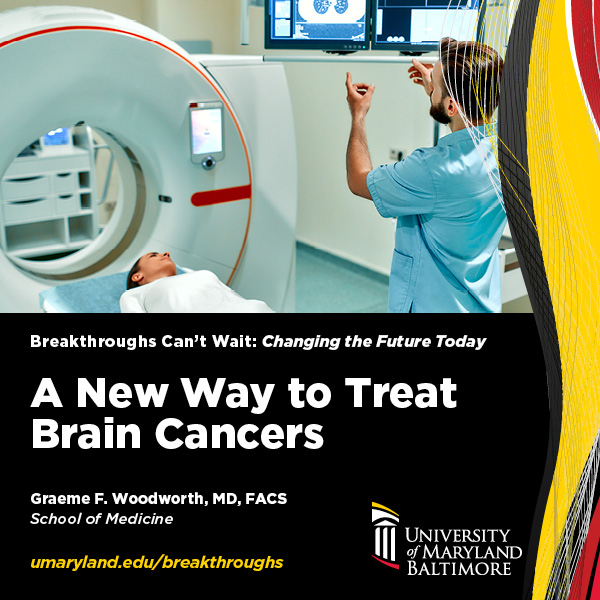Breakthroughs Can’t Wait: Could Focused Ultrasound Transform Brain Cancer Treatment?
July 23, 2025 UMB Office of Communications and Public Affairs
Graeme F. Woodworth, MD, FACS, of the School of Medicine is advancing the treatment of glioblastoma, the most common and deadly primary brain cancer in adults.
At the University of Maryland, Baltimore (UMB), groundbreaking discoveries happen every day — transforming medicine, improving health, and shaping the future. From changing legal policy to pioneering treatments to cutting-edge scientific breakthroughs, UMB researchers are tackling real-world challenges and making a lasting impact on lives everywhere.
In our “Breakthroughs Can’t Wait: Changing the Future Today” series of videos, we will dive into inspiring stories of innovation from across UMB’s seven schools. See how scientists, doctors, and experts are addressing today’s most pressing issues — fueled by the critical support of government funding that drives progress forward.
Graeme F. Woodworth, MD, FACS, chief of neurosurgery at the University of Maryland Medical Center and the Howard M. Eisenberg, MD Distinguished Professor of Neurosurgery and chair of the Department of Neurosurgery at the University of Maryland School of Medicine, is advancing the treatment of glioblastoma, the most common and deadly primary brain cancer in adults. More than 14,000 Americans are diagnosed with glioblastoma each year. Patients typically survive only 12 to 18 months after a diagnosis because the cancer quickly spreads throughout the brain.
Although the initial tumor may be surgically removed, treatment to slow or stop the spread of cancerous cells is greatly hindered by one of the body’s natural defenses, the blood-brain barrier (BBB), which serves as a gatekeeper, protecting the brain by keeping mostly large and water-soluble chemicals — including most chemotherapy drugs — out.
In a new video Q&A, Woodworth explains the use of MRI-guided focused ultrasound to enable chemotherapeutic and nanotherapeutic agents to cross the BBB and provide targeted treatment. His research is funded by grants from the National Cancer Institute and the National Institute of Neurological Disorders and Stroke, both within the National Institutes of Health.
You can watch the video below about this lifesaving work.
Read more about how University of Maryland, Baltimore researchers are tackling real-world challenges and making a lasting impact on lives everywhere.